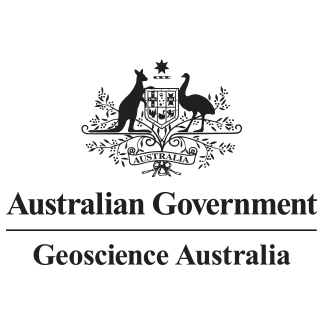Brief description
Total magnetic intensity (TMI) data measures variations in the intensity of the Earth's magnetic field caused by the contrasting content of rock-forming minerals in the Earth crust. Magnetic anomalies can be either positive (field stronger than normal) or negative (field weaker) depending on the susceptibility of the rock. The data are processed via standard methods to ensure the response recorded is that due only to the rocks in the ground. The results produce datasets that can be interpreted to reveal the geological structure of the sub-surface. The processed data is checked for quality by GA geophysicists to ensure that the final data released by GA are fit-for-purpose. . This Cobar P5009 EXT 1 reduced to pole fft 1st vertical derivative grid is the first vertical derivative of the TMI RTP grid of the Cobar Magnetic and Radiometric Survey, 2021 survey. This grid has a cell size of 0.00039074 degrees (approximately 40m) , and given in units of nT per metre (nT/m). The data used to produce the TMI grid was acquired in 2021 by the NSW Government, and consisted of 53617 line-kilometres of data at 200m line spacing and 60m terrain clearance. The data has had a variable reduction to the pole applied to centre the magnetic anomaly over the magnetised body. The VRTP processing followed a differential reduction to pole calculation up to 5th order polynomial. Magnetic inclination and declination were derived from the IGRF-11 geomagnetic reference model using a data representative date and elevation representative of the survey. A first vertical derivative was calculated by applying a fast Fourier transform (FFT) process to the TMI RTP grid of the Cobar Magnetic and Radiometric Survey, 2021 survey to produce this grid. This grid was calculated using an algorithm from the INTREPID Geophysics software package. This grid shows the magnetic response of subsurface features with contrasting magnetic susceptibilities. The grid can also be used to locate structural features such as dykes.Lineage
Maintenance and Update Frequency: notPlannedNotes
PurposeThis data set forms part of the NSW and national airborne magnetic and radiometric mosaic that is continually updated with higher resolution datasets. When integrated with other geological, geochemical, geophysical or technical datasets, it provides pre-competitive insight into the mineral, groundwater, energy, soil and other resource potential of the continental land mass. Subject to the quality control, equipment tolerances and inherent limitations on the measurements themselves, it may also be employed for other geophysical and scientific investigations into the earth.
Created: 21 06 2022
Issued: 12 07 2022
Data time period: 08 06 2021 to 10 08 2021
text: westlimit=145.1; southlimit=-33.1; eastlimit=147.1; northlimit=-31.1; projection=GDA94 (EPSG:4283)
User Contributed Tags
Login to tag this record with meaningful keywords to make it easier to discover
The Geophysical Archive Data Delivery System (GADDS2) portal provides HTTP download of geophysics datasets in a number of formats. Point and line datasets are available in NetCDF and ASEG-GDF2. Grid datasets are available in NetCDF, GeoTIFF and ERS. (File available for download in various formats from the GADDS2 portal)
- global : 98ef086f-5544-4c69-b16b-4c92e2db1649


